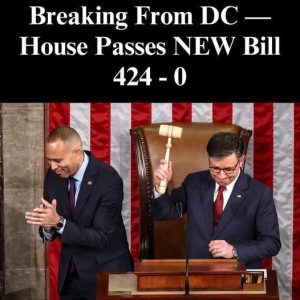In the high-stakes world of American politics, where every word is scrutinized and every statement can become viral content within minutes, even the most experienced legislators occasionally stumble in ways that undermine their intended message. Such moments serve as stark reminders that political passion, while necessary for effective advocacy, must be tempered with precision and constitutional literacy to maintain credibility and effectiveness.
The latest example of this delicate balance between fervor and accuracy emerged from a television appearance that was intended to deliver a serious constitutional argument about presidential fitness for office. Instead, the segment became a case study in how a fundamental error can overshadow substantive policy concerns and provide ammunition to political opponents eager to question a critic’s competence.
What unfolded reveals not only the challenges facing lawmakers who must navigate complex constitutional processes while under intense media pressure, but also the broader implications of how constitutional illiteracy can undermine legitimate political discourse in an era when every mistake is amplified and weaponized by opposing political forces.
The Television Appearance That Sparked Controversy
Representative Maxine Waters of California stepped before MSNBC cameras on Friday with a clear mission: to articulate her concerns about President Donald Trump’s fitness for office and call for constitutional action to address what she perceives as dangerous presidential behavior. The veteran congresswoman, known for her passionate advocacy and willingness to take strong stands against policies she opposes, intended to make a serious constitutional argument about the limits of presidential power.
Waters’ appearance was prompted by Trump’s recent decision to dismiss Federal Reserve Governor Lisa Cook, a move that the California Democrat characterized as both economically dangerous and potentially self-serving. Her concerns about the dismissal centered on its potential impact on monetary policy, interest rates, and the broader economy, issues that fall squarely within her expertise as a senior member of the House Financial Services Committee.
“It is time to call for Article [Amendment] 25 of the Constitution of the United States of America to determine his unfitness, to determine that something’s wrong with this president,” Waters declared during the appearance. “And I would suggest that we move very aggressively to talk about the danger to this country and to our democracy and not play around with this because this is absolutely one of the most destructive things that this president could do.”
However, Waters’ passionate plea was immediately undermined by a fundamental error that would overshadow her substantive concerns about economic policy. By referring to “Article 25” instead of the “25th Amendment,” she demonstrated a basic misunderstanding of constitutional structure that provided her critics with easy ammunition while detracting from her intended message about presidential accountability.
Understanding the Constitutional Error
The mistake Waters made reveals a fundamental confusion about the structure and organization of the U.S. Constitution that is particularly problematic for a member of Congress who has sworn an oath to support and defend that document. The Constitution consists of seven articles that establish the basic framework of government, followed by 27 amendments that modify or add to the original text.
Article 25 simply does not exist in the U.S. Constitution. The Constitution contains only seven articles: Article I establishes the legislative branch, Article II creates the executive branch, Article III establishes the judicial branch, Article IV governs relationships between states, Article V outlines the amendment process, Article VI establishes federal supremacy, and Article VII addresses ratification.
The 25th Amendment, which Waters clearly intended to reference, was ratified in 1967 and provides mechanisms for addressing presidential incapacity or inability to serve. Section 4 of the amendment allows the Vice President and a majority of cabinet members to declare a president unable to discharge presidential duties, effectively removing the president from power until the situation is resolved.
This distinction matters because it reflects basic constitutional literacy that voters rightfully expect from their elected representatives. When lawmakers demonstrate fundamental confusion about the documents they’ve sworn to uphold, it raises questions about their competence to participate in complex constitutional processes and undermines their credibility when making serious arguments about governmental power and accountability





